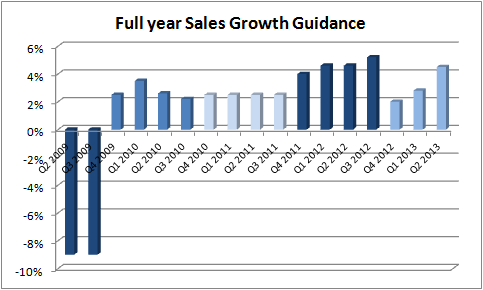It's not often that a company beats estimates and raises guidance
only for the stock to be promptly sold-off by investors. Clearly, in the
case of Home Depot (NYSE: HD ) , the market is pricing in some future macroeconomic uncertainty.
The company's recent earnings were excellent, and gave no cause for the sell-off. The most likely explanation is that investors are starting to fear the future impact of rising rates on the housing market. So is this a buying opportunity in the stock, or is the market right to be concerned?


Home Depot P/E Ratio trailing-12 months data by YCharts
Firstly, while rising rates will affect housing affordability, according to historical data, buying a house via a mortgage is still affordable. For example, here is the NAHB and Wells Fargo (NYSE: WFC ) housing-opportunity index.


The company's recent earnings were excellent, and gave no cause for the sell-off. The most likely explanation is that investors are starting to fear the future impact of rising rates on the housing market. So is this a buying opportunity in the stock, or is the market right to be concerned?
Home Depot hits a home run
In the second quarter, Home Depot recorded its
first double-digit sales increase in over 13 years, and raised full-year
earnings and revenue guidance. Indeed, the latter event is becoming a
pretty good benchmark for improving conditions within the US housing
market.

source: company reports
Clearly the US housing market is doing well this year, but recent rate rises and a fall in new home sales data for July has
highlighted the potential dangers in housing. Conditions may well be
fine now, but if this turns out to be the peak then buying into
home-improvement stores could prove to be a mistake.
Moreover, the valuations on Home Depot and Lowe's (NYSE: LOW ) suggest that both companies need an ongoing housing recovery in order to move higher from here.

Home Depot P/E Ratio trailing-12 months data by YCharts
If you put these arguments together, it is easy to
start beginning the case that Home Depot's prospects have peaked and the
stock could fall from here. Is it really that simple?
Why it's not time to panic
There are four main reasons why investors shouldn't give up just yet.
Firstly, while rising rates will affect housing affordability, according to historical data, buying a house via a mortgage is still affordable. For example, here is the NAHB and Wells Fargo (NYSE: WFC ) housing-opportunity index.

Source: national association of home builders
It is an index that Wells Fargo investors should follow closely, since the bank runs over 20% of the US mortgage market.
The index may well have peaked, but continued job gains and increases
in average household wealth will help to mitigate the effects of rising
rates on the index.
Indeed, Wells Fargo needs an improvement in new
mortgage origination because higher rates are slowing refinancing
activity. In response, the bank is taking measures to boost lending, but
the ultimate guide to its fortunes will be how the housing market fares
in future.
Secondly, homeowner vacancy rates remain low and close to historical norms.

Source: united states census of the bureau
This is a pretty good indication that the housing
recovery has legs, because it implies that there isn't an oversupply of
properties on the market. The figures are nowhere near the kind of
vacancy rates reached from 2006 through 2011.
The third reason is that the economy doesn't just
turn on a dime. The US economy is growing (albeit moderately), and
investment in housing isn't just a function of interest rates. In fact,
rates tend to rise when the economy is getting better, and banks tend to
start loosening credit standards when the economy improves. Moreover,
job gains will add new potential home buyers to the marketplace; all of
which are good for the housing market.
The final reason is that the Federal Reserve is
watching! For all the talk of tapering quantitative easing, the truth is
that Ben Bernanke always outlines that tapering is contingent upon the
economy improving. Since housing is a key part of the economy, it is
reasonable to expect that the Federal Reserve will do what it takes to
keep mortgage rates low.
The bottom line
The market is right to fear some affect from
interest rate rises, but the housing market has too much momentum behind
it to fall away anytime soon. Investors in Home Depot and Lowe's should
look forward to ongoing improvements in end- market demand.
While Home-Depot is more of a pure-play on housing, Lowe's also has upside from its internal restructuring.
The latter is trying to reset its sales lines with a view to increasing
inventory turnover. Lowe's is executing well on its plans, but its
usually easier to do such things when end-markets remain favorable. In
other words, both companies are still likely to see their prospects
dictated by the housing market.
With the market seemingly determined (in the short
term) to price in some future weakness in Home Depot, it looks like a
good opportunity to pick up some stock.




